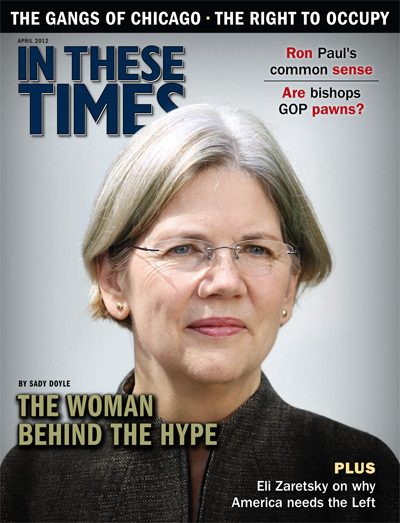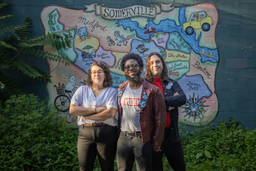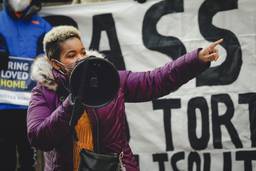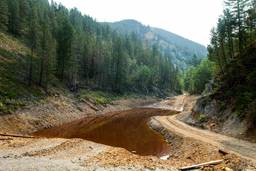How Green Is the Green Economy?
Four environmental organizers and researchers examine the ‘green jobs’ buzz.
Rebecca Burns

A “green recovery” is being championed as a solution to both ecological and economic crisis, but the sanguine rhetoric has not always been matched by progress toward a more sustainable U.S. economy. Growth in “green jobs” has so far included waste incineration and offshore manufacturing of electric sports cars along with weatherization of homes and expansion of public transit. While the Right and industry lobbyists assail the very notion of green jobs, progressive critics argue that the catch-all term permits corporations to continue business as usual while banking public dollars to “greenwash” their image.
In These Times discussed the green jobs conundrum with four environmental organizers and researchers, including David Foster, executive director of the BlueGreen Alliance, a partnership between labor unions and environmental groups; Yvonne Yen Liu, a senior researcher with the Applied Research Center who has examined inequities in the green economy; Joanne Poyourow, a member of Transition Los Angeles, which organizes community-led responses to climate change and shrinking energy supplies; and Ananda Tan, U.S. program manager with the Global Alliance for Incinerator Alternatives, which mobilizes for clean energy and zero waste.
President Obama’s first campaign ad of 2012 touts 2.7 million jobs in the clean energy economy. Do the realities of green job creation match the hype?
David: 2.7 million is a sound but very conservative number – an awful lot of economic activity isn’t counted in that estimate. This is the section of the economy that’s growing faster than all others.
Joanne: To bank on green jobs as the salvation to bring this economy out of recession is giving people false hope. We’re facing a bio-capacity issue as well as a “greenness” issue. Many of the “green” industries that are being touted by corporations and government officials are really ways of greencasting North Americans’ excessive consumption.
There is no standard definition of a “green job.” Does this impact the ability to hold industries accountable? What should be considered a green job?
David: A green job is nothing but a blue-collar job with a green purpose. The green economy could pick up all the jobs that currently exist if we started using products we already make for different purpose – steel is used to manufacture Hummers, but it could also be used for wind turbine towers.
Ananda: Any meaningful definition of “green jobs” should require real evidence of environmental, public health and community economic benefits. Industry has duped lawmakers into gifting them billions of dollars of taxpayer subsidies for false solutions – waste incinerators, biomass incinerators, clean coal and nuclear power – that divert public money, increase pollution and burn materials, which if recycled instead would create 10 times the new jobs.
Many have argued that a clean-energy economy can also be a more equitable economy. How true has this proven so far?
Yvonne: When we talk about green jobs, we often don’t include standards around race, gender and class equity. Less than 30 percent of green jobs are held by blacks and Latinos. Ninety percent of green construction and energy firms are managed and owned by white people.
Ananda: Designs and plans for the green economy need to be made at a community level, where there’s more expertise developing jobs that are not only green but good. In San Francisco, a unionized recycling company has achieved nearly 80 percent recycling while providing those jobs to the poorest in the city.
With fossil fuel production highly subsidized, how can clean energy be competitive? How dependent are clean-energy jobs on federal funding?
David: The failure to pass national clean-energy legislation was a great failure. A regulatory system that mandates targets and timelines on the goals for renewable energy production gives a clear signal to the private-sector economy that we intend to head in a different direction. Without that kind of broad policy, we’re left doing these initiatives piecemeal.
Yvonne: We don’t need to depend on the federal government to bail us out, because they haven’t yet. We can be resilient in our ability to sustain our families and our communities. The Alliance to Develop Power in Western Massachusetts is at the center of an $80 million community economy that started out by facilitating a housing cooperative, and then branched out into contracting and green construction work like retrofits and weatherizing. Community-funded projects like Solar Mosaic here in Oakland allow people to donate money to have solar panels installed, usually at a community center or nonprofit site. After it’s installed, the money gets paid to the investors and generates wealth for the community in the form of energy savings
Ananda: We need to re-localize our political priorities. Start with the governments we can hold accountable to come down on big polluters in our backyards, and shift the local subsidies – utility contracts, waste contracts – that are feeding polluting industries.
Joanne, tell us about your work in Transition Los Angeles.
Joanne: Transition is a network of grassroots groups that are asking: What will climate change mean for our local food supply? What can we do to ensure our energy and water supplies? Six years ago in L.A., five of us started by putting in a community garden in the site where we were meeting. Then we began gardening classes, rainwater harvesting demonstrations and a miniature orchard. We’re working in conjunction with the L.A. Unified School District (LAUSD) and the mayor’s office to build a new garden at a local middle school that will define some of LAUSD’s models for the entire area. We touch a few thousand people now through eight groups based in different neighborhoods.
How do your organizations build support for this agenda, particularly among groups worried about losing existing jobs?
Ananda: We need to break away from the dichotomy of jobs versus environment. If we doubled our national recycling rate, we could create 1.5 million new jobs, and the climate pollution reduction would be equivalent to taking 50 million cars off the road.
But given continued economic contraction, is the green jobs paradigm an adequate response to either the unemployment or the climate crises?
David: There is a green model of economic growth that can put Americans back to work doing the work that America needs done – the construction of mass transit systems, renewable energy production and infrastructure, the retrofitting of every commercial building and home in America. The fundamental problem has been that the Obama administration’s stimulus package was too small. But it’s given some clear signs about how to use green growth as a way to return us to full employment.
Joanne: To be depending on government dollars to re-float an economy that we saw in the ’80s and ’90s is unrealistic. Faced with a severe curtailment of our energy supplies within the next five-to-10 years, government is not that powerful. The current packaging of green jobs isn’t moving us toward something that is going to make our local communities more resilient. We are facing a future where we will have less ability to transport food, to manage our sewage and to move our waste. The transformation is going to be coming from a lot of much smaller industries.
Yvonne: I like the term “community economy” instead of “green economy” because it doesn’t allow corporations to use the cover of green jobs to continue with their same practices. We’re so naturalized to thinking within the system of capitalism. This moment is giving us a psychic break to think outside of that. I think the long-term solution does lie in community economies.

I hope you found this article important. Before you leave, I want to ask you to consider supporting our work with a donation. In These Times needs readers like you to help sustain our mission. We don’t depend on—or want—corporate advertising or deep-pocketed billionaires to fund our journalism. We’re supported by you, the reader, so we can focus on covering the issues that matter most to the progressive movement without fear or compromise.
Our work isn’t hidden behind a paywall because of people like you who support our journalism. We want to keep it that way. If you value the work we do and the movements we cover, please consider donating to In These Times.
Rebecca Burns is an In These Times contributing editor and award-winning investigative reporter. Her work has appeared in Bloomberg, the Chicago Reader, ProPublica, The Intercept, and USA Today. Follow her on Twitter @rejburns.








